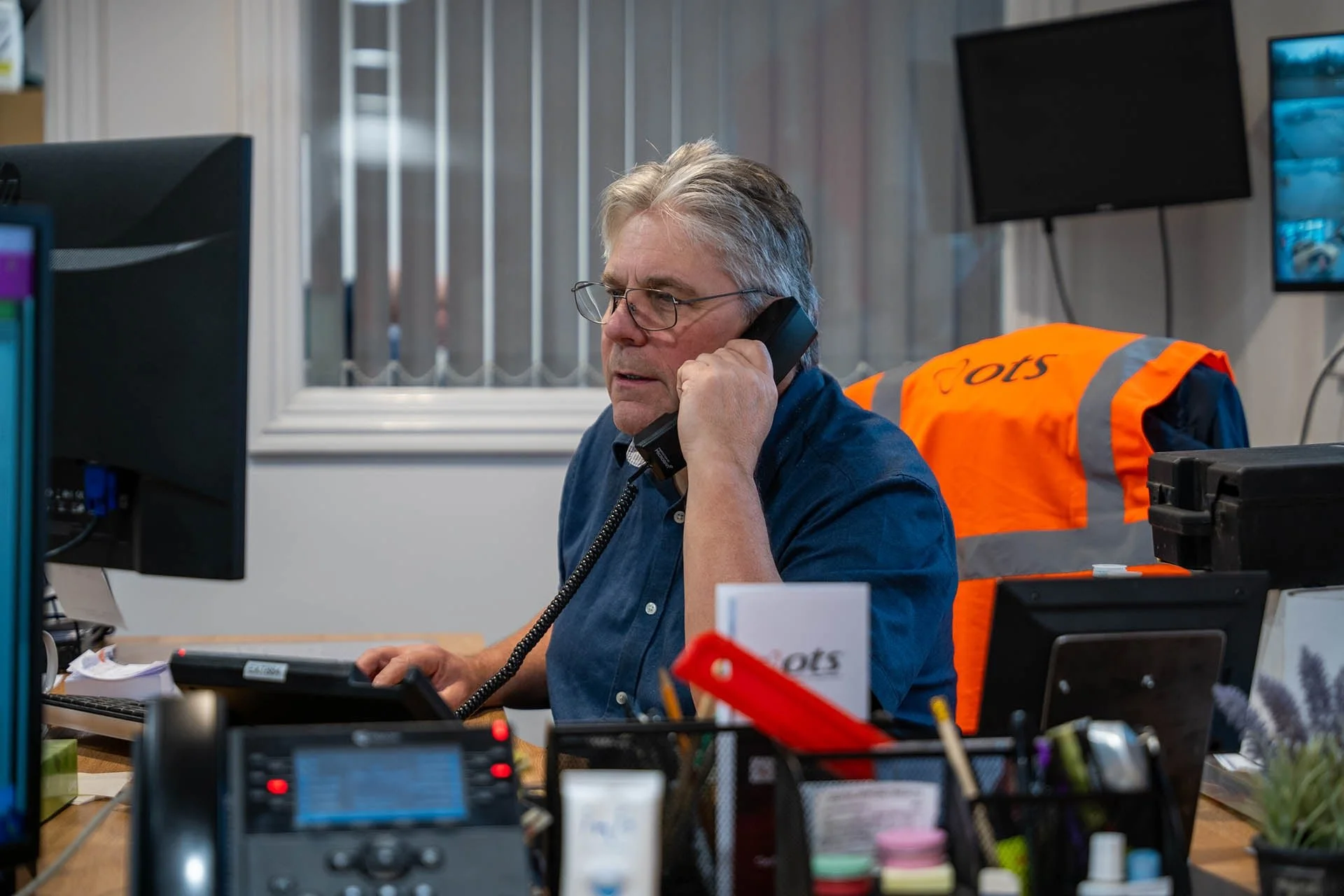Interview with Mike Tyrer: The Man Behind the Method Statements
At OTS Group, safety and quality aren’t just procedures, they’re principles, and few people know that better than Mike Tyrer, our Health, Safety & Quality (HSQ) Manager. From building risk assessments that keep engineers safe on site to overseeing the company’s ISO 9001 certification, Mike plays a vital role in making sure every job is delivered safely, efficiently and to the highest standards.
We sat down with Mike to talk about dynamic risks, building confidence through planning, and why safety starts with listening.
Mike Tyrer, Health, Safety & Quality (HSQ) Manager
Mike, tell us a bit about your role. What do you actually do day to day?
My official title is Health, Safety & Quality Manager, but no two days are quite the same. One day I might be producing a set RAMS (Risk Assessment and Method Statement) for a decommissioning job at a marina, and the next I’m managing documentation for our ISO 9001 quality audit. A lot of my time is spent liaising with the engineers and the project teams, making sure they’re fully briefed and have the information and support they need to work safely.
I also manage training, tracking refresher courses for staff across the business, and helping to ensure we’re not just compliant but continuously improving.
What makes producing RAMS at OTS different to other companies?
Every site is different, and our engineers do a wide range of work, from manufacturing and tank installation to service work, fuel uplifts, and decommissions. The risk profile of a commercial fuel station is very different to a landfill site or a coastal dock for example, so I build each RAMS to reflect the real environment and the actual job being done.
We think about everything: how the engineer is going to get there, what the weather conditions might be, what equipment they’re using, and even the client’s induction process. A good method statement should feel like a roadmap and a safety net, not just a form.
You’ve worked in some high-risk industries before joining OTS. How does that shape your approach?
I used to work in bottom ash recycling, where the machinery and processes were extremely hazardous. That experience made me very aware of how quickly things can go wrong if systems aren’t clear and followed properly. It also taught me the value of involving the people doing the work in the planning stage.
At OTS, I try to bring that same mindset. Create clear, practical procedures and then check in regularly with the teams using them. The best paperwork in the world is useless if no one believes in it.
What’s been the biggest learning curve since joining OTS?
Honestly? The sheer variety. At my last place, it was one site, same processes. Here, we could have six different teams on six different sites across the country, each with different needs. That means I’m constantly learning and adapting.
Also, we’ve had some recent projects in France and elsewhere in Europe, which brought new legal requirements and safety standards into play. That’s been a huge education, and something I’m proud to say we’ve managed well!
How do you think OTS’s approach to safety and quality benefits clients?
Clients in this industry need more than just a supplier, they need certainty. When we turn up on site with a clear, compliant method statement, trained engineers, and a tidy van, it shows that we’re serious. That builds trust.
And because we take safety seriously, our work is more reliable. Fewer errors, less rework, no surprises. That makes us more efficient, and the client gets a better result.
What’s one thing people often misunderstand about health and safety?
That it’s about saying "no." I don’t see my job as a blocker. I see it as an enabler. I want our engineers to be able to do their jobs with confidence, knowing we’ve already planned for the risks. It’s about finding safe, sensible ways to do the work, not stopping it.
And finally, what makes you proud to work at OTS?
The people, without a doubt. There’s a real sense of collaboration here. I might write the RAMS, but I rely on the engineers and the project managers to tell me what’s actually happening on site. We all feed into it.
We’re growing quickly, but we haven’t lost that sense of responsibility to each other. Everyone wants to do the job well, and do it safely. That’s what makes it worth it.
Mike’s Top Five Safety Principles
Listen first, then plan
Make every document site-specific
Trust your team, but back them up
Keep training current and relevant
Treat quality and safety as inseparable

